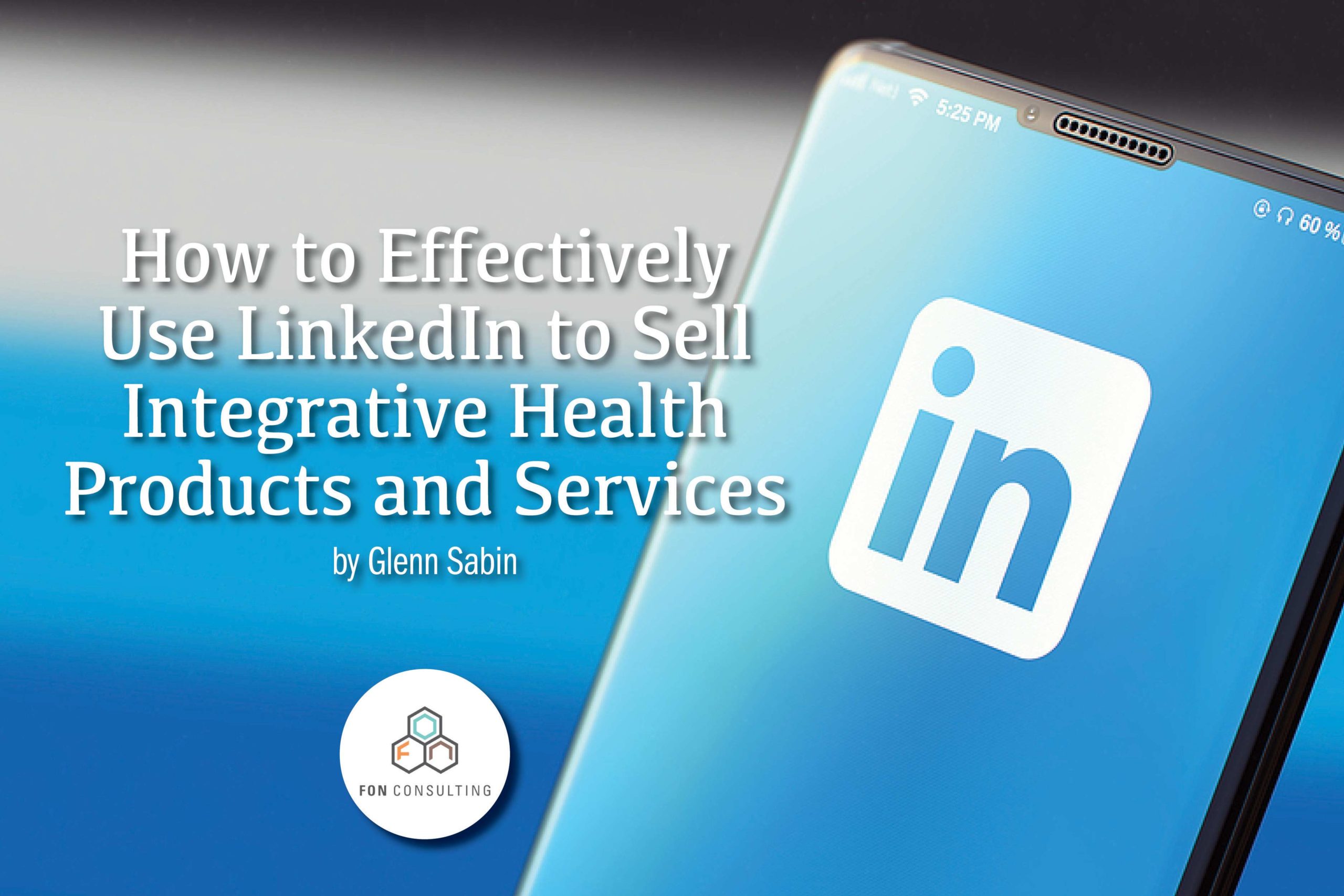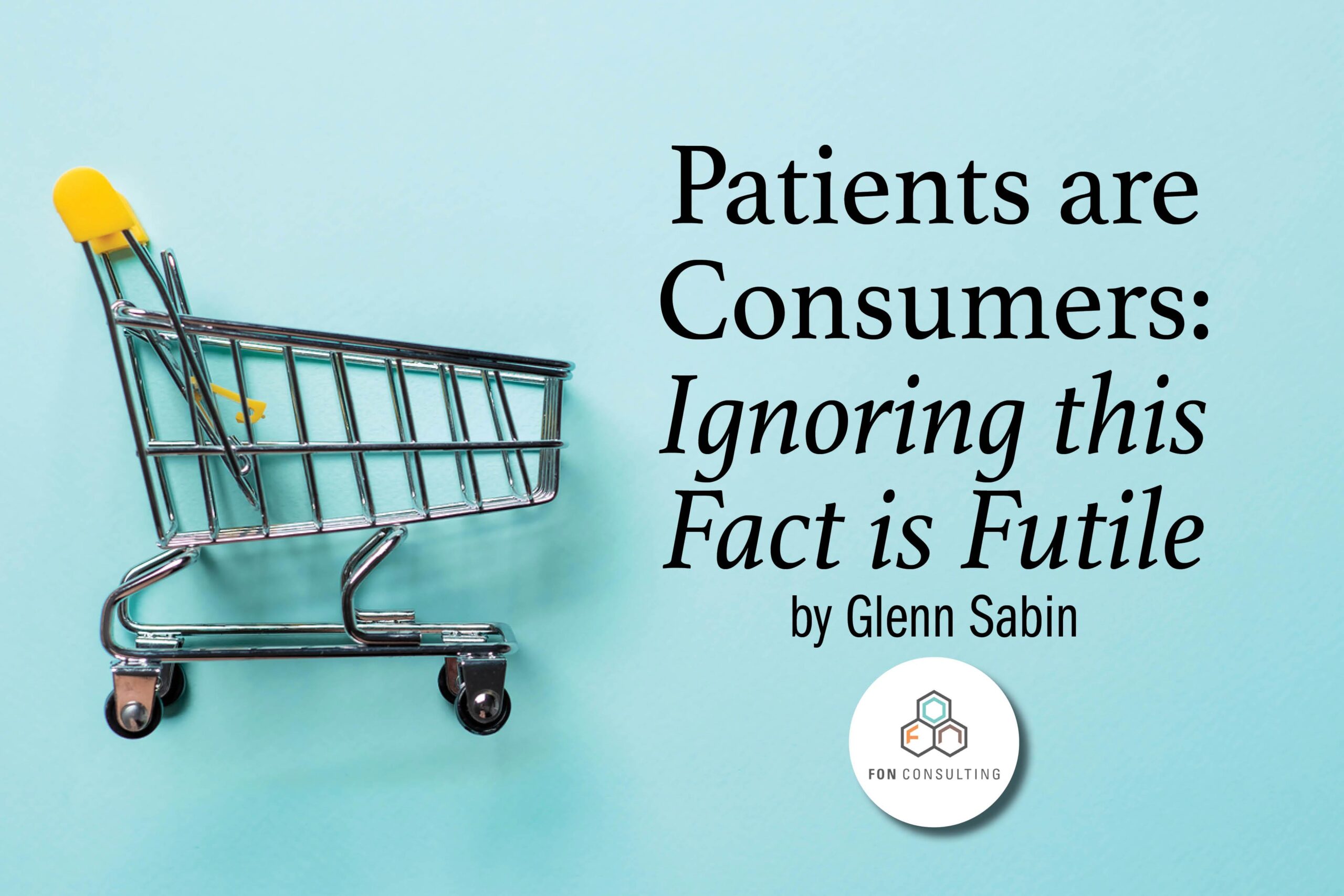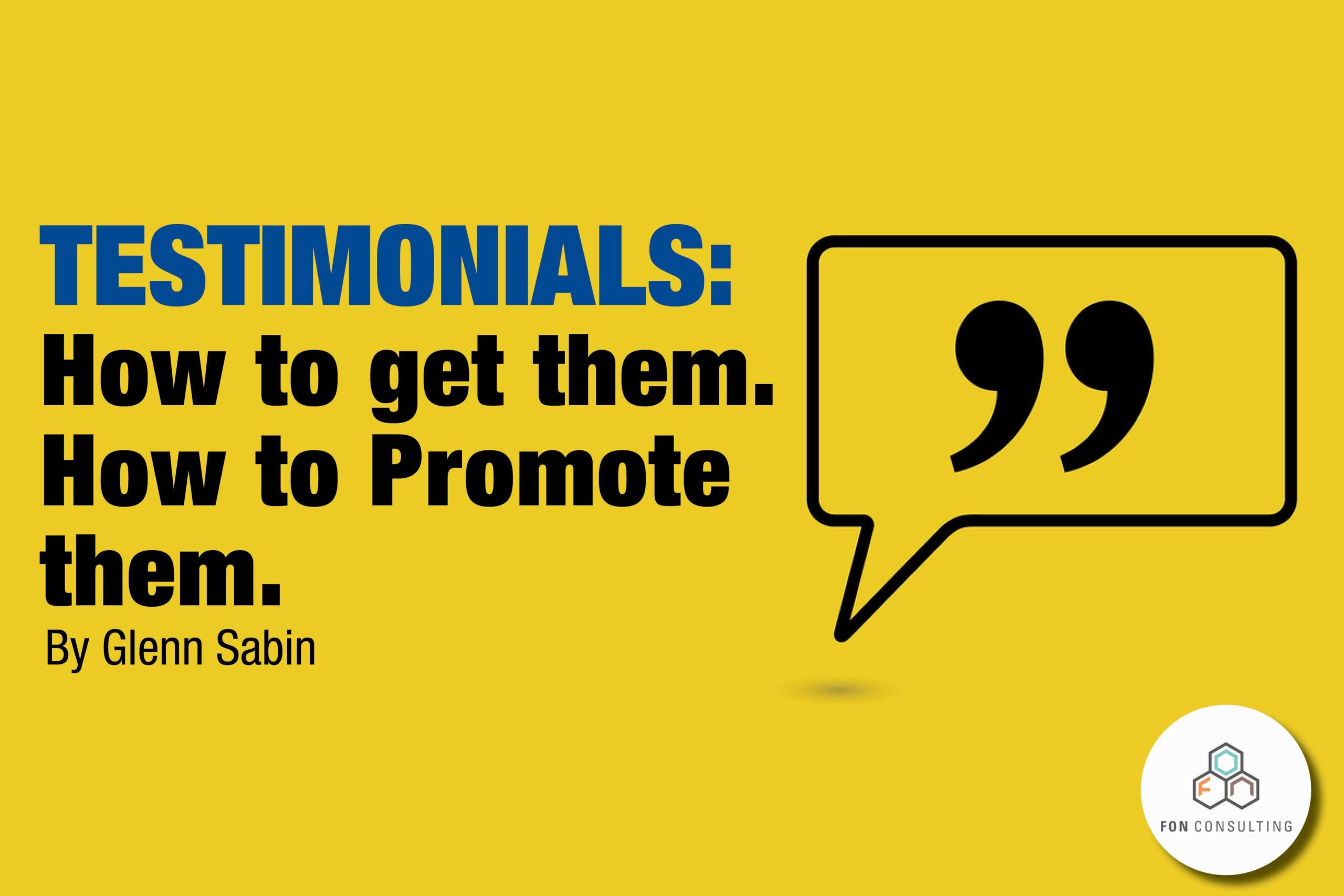12 Ways to Grow Your Integrative Medicine Practice… Beyond Internet Marketing
By Glenn Sabin

I am widely known as the ‘digital’ marketer based on my writings and consulting practice which often focus on customer engagement via online strategies. That’s fair. Yet I also have an extensive background in more traditional forms of media and marketing. And today I’m here to tell you that there are plenty of tried and true methods for building clinic utilization not dependent on the Web or digital marketing.
I advocate the creation of smart, implementable and—most importantly—sustainable strategies to effectively grow integrative medicine practices.
I’m far less concerned about the myriad tools and digital platforms available to master, than what’s most important: creating a smart plan and doing the work. Oftentimes, the work that needs doing is not all about bits and bytes or shares and tweets.
Content and communication is paramount. Physical networking in the community is important. Engaging your current patient panel is paramount. And over-delivering incredible service is critical.
I recently presented at a conference to a group of practice administrators and physicians on the subject of integrative medicine practice development. During my talk I covered all things digital and how it applies to brand identity, IM thought leadership and patient engagement. And, of course, my evangelical-like focus on the power of content and storytelling.
But I also spent significant time discussing non-digital core practice development strategies and tactics proven to grow any type of medical practice when properly implemented.
Many conventional practices that accept insurance can grow well organically just by participating with large third-party commercial payers and Medicare, making sure they’re included in provider directories and securing physician referrals. However, direct-pay (also, concierge models including hybrid insurance/membership) integrative and functional medicine clinics typically have more work to do to build their patient panels.
Are you a fee-for-service cash-based clinic that provides patients with super bills? Perhaps your patient consults go through insurance but other services are cash only, e.g., acupuncture, IV therapies and supplements. The point is it requires more work to communicate the inherent value of your services and products, and, why patients should make this additional investment on top of paying their insurance premium.
A Strategy of Just Bits and Bytes is Rarely Enough to Achieve Consistent Growth
While the following efforts and activities should complement your digital marketing strategy, on their own they are proven and effective pre-digital age methods. Let’s take a look:
1. Word of Mouth
Nothing will ever be more effective to grow (or kill!) any type of business. Word of mouth (WOM) is more powerful than any form of paid advertising. And yes, this has also carried over to social media, where more folks are moved to action by the ability to share customer experience, both good and bad. Word of mouth is your reputation. What could be more important?
The power of WOM has been accelerated in the digital age as consumers now have unprecedented ability to broadcast reviews of their clinic experience on the myriad reputation platforms such as Yelp, Healthgrades and Google Business Profile. But the key ingredients to ensuring strong WOM have remained over the centuries: over-deliver in all aspects of service, communicate and follow-up and listen to your customers. Do these things well and you’re golden. Your community will support you (and sing your praises throughout the village).
2. Professional Referrals
Communicate to non-competing practitioner colleagues and other allied health professionals to let them know you are accepting new patients and would appreciate the opportunity to care for their patients. Develop a referral strategy that includes database development, a direct mail effort, telephone outreach and select office visits with those from whom you would like to receive referrals. Educate your prospective referral sources on the benefits of evidence-based integrative medicine. Tightly focus on lifestyle medicine approaches supported by ever-growing published literature.
Like anything else that’s worthwhile and approached organically, building a meaningful referral network requires time, effort and persistence… but it will be well worth it.
3. Print Collateral
Print is still effective! Utilize attractive and well-messaged collateral brochures to:
• Communicate with existing patients about your range of services and products—make your brochure accessible to patients in various areas of your clinic; some folks will also pass-along to others.
• Leave at other places of business—natural food co-ops, community centers, spas, gyms….
• Include with your practitioner referral efforts
• Distribute at health fairs and other events
4. Self-Insured Employers
I have written about self-insured companies and integrative medicine making the perfect marriage.
Over 125 million Americans now rely on self-insured companies for their healthcare benefits. These companies essentially assume the financial risk, and are highly motivated to reduce absenteeism, “presenteeism” (this is when employees actually show up but have conditions that limit their productivity output) and their overall health care expenditures while increasing overall productivity and, thus, shareholder value.
Self-insured companies choose which products, interventions and practitioners are covered, so they have the discretion to cover your services even if you are a direct-pay provider. (Learn: How to Sell Integrative Healthcare to Corporate America.)
5. Open House/Meet & Greets
An open house is not just for grand openings. Seize any opportunity you have to welcome prospective customers (aka patients) and referring medical professionals to your center. Consider a mix of “edutainment”—education about conditions your center treats with an integrative approach, mini samples or products or select services, light healthy food and beverages. Create an engaging experiential environment that communicates the ethos of your practice.
Enjoying this article? Subscribe and get our latest, delivered straight to your inbox.
6. Join Your Local Chamber
Your local chamber of commerce is good place to inform business leaders that you are open for business and seeing new patients. It’s a good environment to tell community business owners about the holistic care you provide and ask for referrals. (Don’t forget to bring some of your new brochures!)
7. Create a Support Group
Consider establishing a support group around a chronic condition or disease where you have expertise, thus becoming a conduit for community to gather within your space. Creating this type of environment shows that you genuinely care, builds trust and rapport with existing clients and provides a great opportunity to meet new prospective patients. Open with a short talk, do some Q&A and then let folks engage directly. Or… simply be a guest speaker at established local support groups (and other Meetup-style communities) where you feel you can add value through authentic engagement and education.
8. Media Relationships
Take a close look at the media landscape—print, radio and local television—to identify health-directed sections, “health minutes” and programs for which you are qualified to contribute your thoughts and expertise. Consider contributing a health column or guest appearance or editorial.
Is there a health-oriented radio station or regular show on your top-rated station to which you could make a significant contribution? Don’t be concerned about getting paid (unless you are asked to take on a major piece of media-making). This is about getting your brand—you and your clinic—in front of new audiences. It’s an opportunity to stimulate new patient volume through the provision of relevant, trusted information.
Through developing and sustaining quality media relationships, you will become the go-to physician on specific health topics and asked to do more interviews.
9. Print Advertising
Contrary to popular belief, print is not dead. Although health information is a top search category on the Web, not everyone consumes their health information this way. The secret to any marketing strategy is to serve customers content and messaging in the form(s) they most prefer to consume it. For many folks, the preferred format remains print.
If you are working with a local integrative health-directed publication like Pathways, Natural Awakenings or a number of other publishers, and consistently gaining new patients, then by all means continue these relationships.
However, if your print advertising investment does not seem to be paying off, take a close look at how your ads communicate (the message)—both textually and graphically. Consider the placements of your ads. Calculate what you are paying on a CPM (cost per thousand basis) to reach the audience. Check to see if the media outlet has a third-party audited circulation. Speak to your sales representative or the publisher about other ways you may reach their audience. And always, always negotiate the terms!
Of course I’d prefer for you to become a content contributor like previously discussed (see Media Relationships) than solely focus on paid advertisements. But targeted ads can still be effective if the message, creative and distribution is strong—and, you pay the right price.
10. Print Newsletter
Do you already have an e-newsletter? If so, good for you, it’s important. Hopefully it’s content-based and not simply a big promotion or advertisement for your clinic’s products and services. Now, what percentage of the folks receiving your e-newsletter, actually open it up and engage with it? Are you reviewing the analytics provided by your email delivery service provider?
Here’s the thing. Open rates for e-newsletters can be quite low, sometimes 10-20 percent. This result can be attributed to the timing of when the campaign was transmitted, the subject title, and a host of other things… but it’s mostly par for the course. There’s lots of competition in one’s email inbox and it’s easy to hit the delete button. And this assumes it didn’t land in a spam folder to begin with.
Use a paper-based mail effort to reach those who are on your email list but not engaging with your e-newsletter. Your entire patient panel has not opted in to get your e-newsletter. And again, digital is not everyone’s favorite format to consume media. Fortunately, you have all of your patients’ mailing addresses, creating a wonderful opportunity to reach ALL of your clients.
Repurpose your e-newsletter into a simple, attractive print template. Once set, the template can be used for a long period of time. Relatively inexpensive to mail to your current panel of 1000 or 2000 patients, your new print piece can also be produced for a fairly reasonable sum. .
Delivered with continuity, a paper-based newsletter can be quite engaging, keeping your practice on your customers’ mind. Although paper cannot be shared socially in bits and bytes, it can be passed along physically and distributed practically everywhere your brochure can.
11. Direct Mail
Do not discount the impact of delivering your message old-school—via paper in mailboxes—even though the United States Postal System may only be delivering three days per week by the time you are ready to drop your first direct mail campaign!
Remember those sometimes appalling open rates for email messages and e-newsletters I mentioned earlier? Fortunately, the open rate for direct mail tends to be much higher—that is, unless you’re a credit card issuer!
Even if you have been diligent in capturing email addresses from current patients and prospects with a smart opt-in process, direct mail enables you to cost-effectively target a larger pool of new prospects with many options called “selects”.
Let’s say you are an integrative woman’s health physician with a direct-pay practice focusing on obstetrics and gynecology. Working with a list broker you can chose selects such as specific zip codes, age groups, income levels and importantly, woman only. Test 5000 pieces and track the response.
12. Experiential Marketing
Whatever you want to call it, experiential marketing, community outreach or educational seminars, no other form of communication has the potential to connect more deeply than live presentation.
The best way to gain trust and credibility around your integrative health brand is to provide quality, relevant information that’s most useful to your community.
(More on experiential marketing and community outreach can be found here.)
Key Takeaways
• Digital marketing, including SEO, paid search and social media is important, but not a panacea.
• Traditional forms of communication and marketing are still powerfully effective if you have a solid strategy and implementation plan.
• Just like chronic disease, there is not a one-size-fits-all magic bullet approach to build patient volume…
• …And to that end, customize your business/practice development efforts based on your unique situation and clientele—but do include a broad mix of traditional and digital forms of marketing and messaging.
This is just the tip of the iceberg when it comes to effective marketing and communication tactics you can test at your practice.
About FON
FON is a leading integrative health and medicine business development and strategy consulting firm. FON specializes in custom solutions for growing patient volume, developing programs, and increasing product sales. Our practical business models are driven by innovative marketing, clear messaging, and customer engagement via branded storytelling.
Contact us today to schedule a complimentary 30-minute consultation to discuss your business development or personal brand needs.

Glenn Sabin, founder of FON and author of n of 1, is a nationally recognized thought leader who positions health innovators, enterprises, and organizations for sustainable growth. Leveraging deep experience in media, strategy, marketing, and business development—and his own compelling cancer journey—he champions personalized medicine and the generation of real-world data and evidence to help define a new, accessible standard of care.
Read Glenn’s story.




















